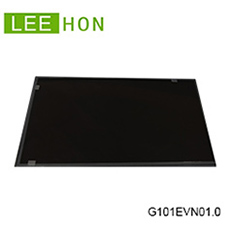skype:
skype:

Splash Phenomenon Analysis for TFT LCD part Ⅱ
Flicker caused by incorrect refresh frequency setting
For this type of splash screen, the phenomenon is that the screen display is unstable when playing an animation or quickly switching pictures, and one or two horizontal stripes may appear and the position is not fixed.
This is related to two frequencies, one is the frequency from the CPU to send data into the RAM, and the other is the internal refresh frequency of the module.
The refresh rate can be matched to the CPU write speed by adjusting the registers. It also allows the customer to match the two by changing the write speed of the CPU.
One more possible reason, flicker caused by inconsistent scanning direction.
This phenomenon of splash screen is similar to the phenomenon that the frequency mentioned above does not match the flash screen. This phenomenon does not occur often, but because there is not much contact,
there may be occasions when it is not good to consider this direction. The adjustment frequency phenomenon has always existed. At this time,
it is necessary to check whether the update direction of the CPU when sending data to the RAM is consistent with the refresh direction of the module.
Last by not least, the IC refresh frequency does not match the backlight PWM signal frequency, resulting in a splash screen.
This kind of situation occurs mostly on the CSTN module. It is easier to produce in the semi-bright state. The reason is that the PWM signal is deceiving the eyes by switching the backlight between the bright state and the dark state.
This gives the impression that The backlight is dark, provided that the frequency is fast enough. If this frequency does not match the refresh rate of the IC, the two frequencies may appear to be similar to water ripples due to mutual interference.
This phenomenon occurs mostly on Sitronix ICs. In order to make the power smaller, their ICs generally set the default crystal frequency to be lower, so this phenomenon often occurs in the semi-bright state.
Improvement measures: change the crystal frequency and refresh frequency to see the effect. Since the period will become smaller after the crystal is changed larger, the possibility of matching will be larger.
Therefore, the general debugging direction is to increase the refresh frequency of the IC, and also allow The customer adjusts the PWM signal appropriately to match the debugging.
